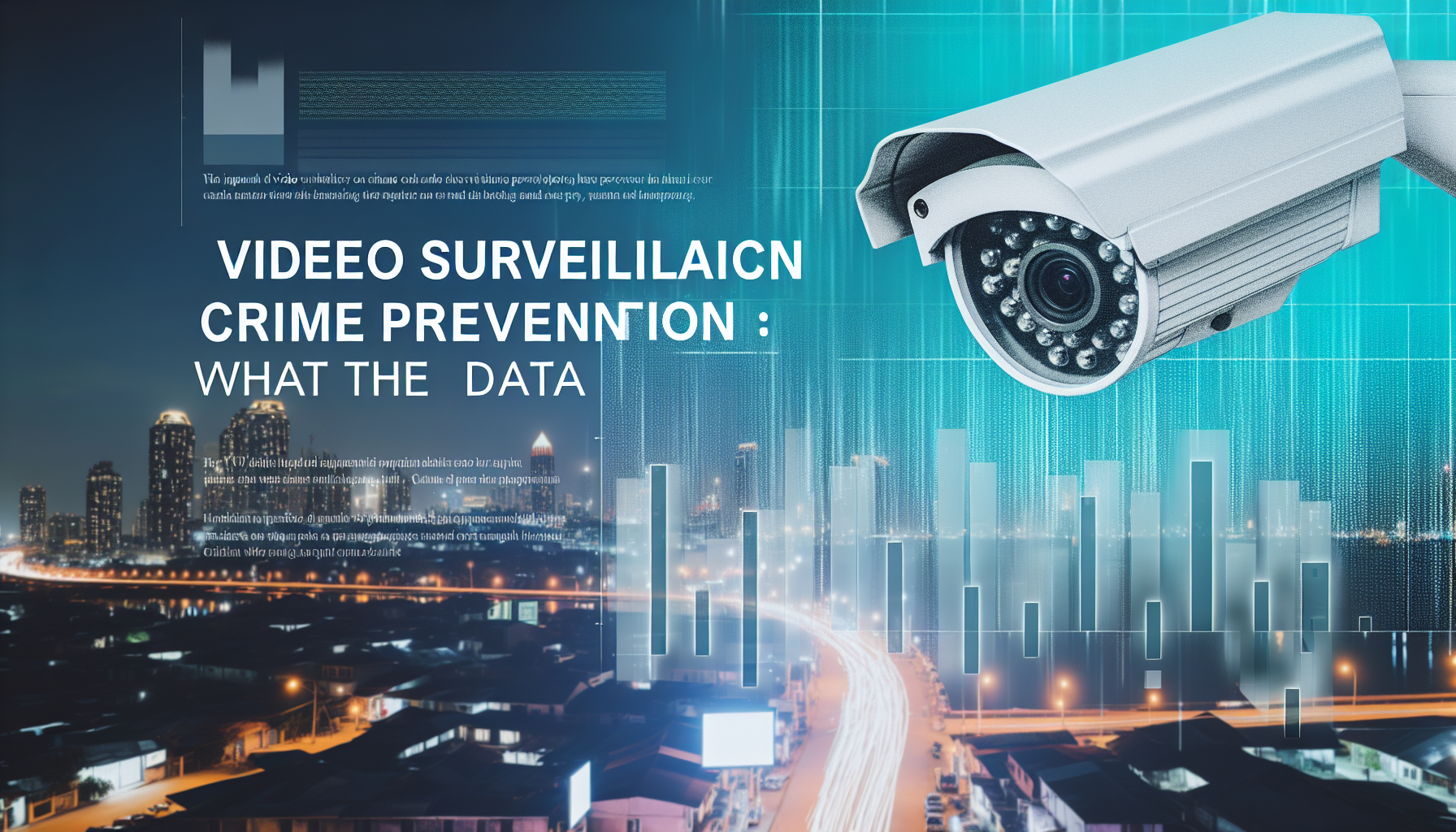In recent years, the prevalence of video surveillance systems in public spaces and private properties has risen dramatically. From shopping malls and banks to residential neighborhoods, closed-circuit television (CCTV) cameras are becoming ubiquitous. The question arises: how effective is video surveillance in preventing crime? This article endeavors to dissect the available data and research regarding the impact of video surveillance on crime prevention.
The Evolution of Video Surveillance
The origins of video surveillance can be traced back to the 1940s, but it wasn’t until the 1990s that its application became widespread, largely due to technological advancements and a decrease in costs. Modern surveillance systems utilize high-definition cameras, cloud storage, and smart analytics powered by artificial intelligence, making them more efficient and easier to deploy.
The Mechanisms of Deterrence
Video surveillance functions primarily through two mechanisms: deterrence and detection. Deterrence occurs when the mere presence of cameras discourages criminal activity. Studies suggest that potential wrongdoers may think twice before engaging in illicit activities in areas where they know they are being monitored. Detection comes into play after a crime has taken place. Video recordings can provide crucial evidence that aids investigations, leading to arrests and convictions.
Data on Crime Rates and Surveillance
Many studies have examined the effectiveness of surveillance systems in reducing crime rates. One notable study conducted by the University of North Carolina at Charlotte reviewed 41 studies on the impact of CCTV systems. The findings suggested that video surveillance can lead to significant crime reductions, particularly in specific environments such as parking lots and public transport systems.
Public Spaces
In urban areas, the installation of CCTV has shown a marked reduction in crime. For instance, a study conducted in London noted that crime rates in monitored areas decreased by more than 30%. The report highlighted that the most considerable declines occurred in property crimes such as theft and vandalism, which are often opportunistic in nature.
Private Businesses
Businesses also leverage surveillance for crime prevention. A study of retail theft found that stores equipped with surveillance cameras experienced a 23% reduction in inventory shrinkage. Additional benefits include eliminating fraudulent claims and reducing employee theft. This aligns with findings from the American Society for Industrial Security (ASIS), which noted that up to 45% of retail losses come from employee theft, demonstrating how surveillance can have a multifaceted impact.
Neighborhood Watch Programs
Community-driven initiatives are also benefiting from video surveillance. Neighborhoods that have adopted surveillance cameras have reported decreased crime rates and enhanced safety perceptions. For instance, a neighborhood in Baltimore that installed cameras experienced a 50% drop in crime over a year. Residents reported feeling more secure, fostering greater community engagement and cooperation with local law enforcement.
Limitations and Criticisms
Despite the robust evidence supporting the benefits of surveillance, several limitations and criticisms must be considered.
Privacy Concerns
One of the most significant critiques of video surveillance is the potential invasion of privacy. The omnipresence of cameras can lead to a "big brother" atmosphere, where individuals feel constantly watched. This concern has sparked debates about the balance between public safety and individual privacy rights. Notably, various jurisdictions have implemented strict regulations governing the use of surveillance cameras to protect citizens’ rights.
Effectiveness in High-Crime Areas
While many studies demonstrate positive outcomes, the effectiveness of video surveillance can vary based on location. In high-crime neighborhoods, cameras may serve as a deterrence against some crimes but fail to tackle deeper issues related to socioeconomic conditions or community trust in law enforcement. A multifaceted approach to crime prevention—including community engagement—often yields better long-term results.
Limited Scope of Surveillance
Another limitation is that surveillance systems cannot prevent crimes. They can only record them or deter opportunistic offenses. More organized criminal activities, such as drug trafficking or gang violence, may continue unabated despite the presence of cameras.
The Future of Video Surveillance
As technology continues to advance, the capabilities and applications of video surveillance will likely evolve. Innovations such as facial recognition, artificial intelligence, and augmented reality are changing the landscape of surveillance. While these technologies offer exciting prospects for enhanced crime prevention, they also raise ethical questions that society must grapple with.
Conclusion
The data strongly indicates that video surveillance has a positive impact on crime prevention, significantly reducing crime rates in various environments. However, it is essential to weigh these benefits against the potential drawbacks, including privacy concerns and the technology’s limitations. For video surveillance to be effective as a tool for public safety, it must be implemented thoughtfully, with an eye towards integrating community needs and technological advancements.
FAQs
1. Does video surveillance actually deter crime?
Yes, studies show that the presence of video surveillance can significantly deter crime, particularly in areas prone to property offenses such as theft and vandalism.
2. Are there any privacy concerns related to video surveillance?
Absolutely. The use of surveillance cameras raises valid privacy concerns. Citizens often fear that they are being watched continuously, which has led to calls for regulations to protect individual privacy rights.
3. Is video surveillance effective in residential areas?
Yes, many residents feel safer in neighborhoods that utilize video surveillance, reporting reduced crime rates and increased community engagement.
4. Is video surveillance cost-effective for businesses?
Yes, businesses that employ video surveillance often see reductions in theft and fraud, which can lead to significant financial savings over time.
5. Can video surveillance prevent all types of crime?
No, while video surveillance can deter opportunistic crimes and assist in investigations, it cannot prevent organized or non-opportunistic crimes from occurring.
6. What advancements are being made in video surveillance technology?
Emerging technologies include facial recognition, AI analytics, and cloud-based systems, which enhance the capabilities of video surveillance and may introduce new ethical considerations.
In conclusion, video surveillance is a powerful tool for crime prevention, but it should be approached with caution and responsibility, always considering the broader implications for society.


